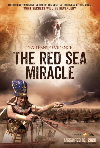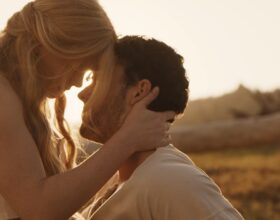Where exactly did God part the waters so that the children of Israel could cross “as by dry land,” as both Exodus 14:22 and Hebrews 11:29 attest? That’s the question Timothy Mahoney tries to tackle in his latest effort to support biblical truth with evidence.
Fascinated with the Old Testament story of God liberating the Israelites from Egyptian bondage by the hand of His servant Moses, Mahoney has been pecking away at this colossal undertaking for the better part of two decades. He risked his business and personal life, undaunted by those who even in his documentaries say that it’s “unachievable” or that “archaeology can’t prove or disprove a miracle.”
As you might expect, there are far more questions than answers because to answer the overarching where question, you’ve got to first settle on how to interpret the clues. Because those clues are open to a wide range of interpretations, narrowing down exactly where the famous story took place is monumentally difficult. There are two schools of thought that Mahoney spends much of the documentary examining — the Egyptian way of thinking, which leans heavily toward a miracle of small scale, not far up the road from where the Israelites departed and not over anything that really would be called a “sea” at all but more like a lake. Or the Hebrew way of thinking, which asserts that the confrontation between the Israelites and Pharaoh’s charioteers took place on the other side of the desert, farther from Egypt, over a deeper body of water.
And is Mahoney looking for the crossing of the Red Sea or the Reed Sea? It’s not just a question of a missing “e.” The body of water that the Israelites crossed over, which has been translated “Red Sea,” is “Yam Suph,” which more accurately translated is “Sea of Reeds.” Adding to the importance of this question is the fact that there are lakes with reeds closer to Egypt while the Red Sea itself is pretty much reed-free.
Mahoney looks for the evidence wherever he can find it — not just the details found in Exodus, but extrabiblical sources and researchers who aren’t necessarily people of faith. He is encouraged by one expert whose mind seems to have changed over the two decades. When Mahoney first started exploring the topic, in 2002, Manfred is seen on video footage saying he had not found evidence that Israelites were ever enslaved in Egypt. But with age often comes wisdom, and Manfred’s extended research found so many Hebrew toponyms in places where logically they should not be found, that he’s now at least open to the idea that there might be something to support Mahoney’s underlying belief.
It’s a fascinating topic to examine, but it’s also a bit tedious and academically murky in many places. But any student of the Bible should be armed with means to support what he or she believes, and this documentary will give anybody exploring the question of the Red Sea miracle an abundance of manna and quail for thought to chew on. As such, it merits the Dove-approved seal for All Ages.





